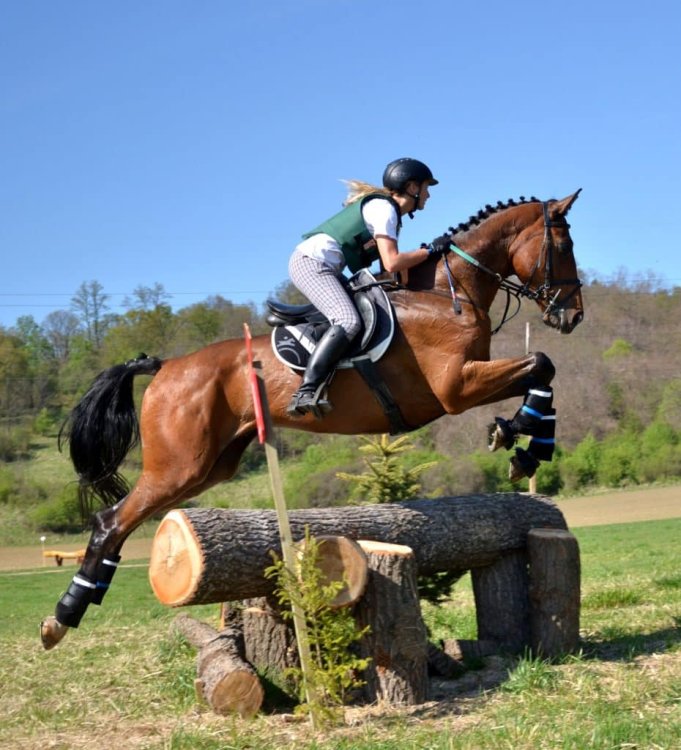in basket
Energy in horse diets

What is energy?
We all need energy to survive and your horse is no different. Energy is required to maintain the body’s many vital functions and as fuel for exercise. Animals obtain energy from food; however, when no food is provided the body begins to draw upon its reserves. The first to be mobilised is glycogen and once those reserves have been used then fat reserves are mobilised and then finally when those energy sources are exhausted the body will begin to breakdown protein to produce energy. Amino acids are released into the blood stream and converted into glucose in the liver. Energy itself is not a nutrient, but instead is provided by constituents of your horse’s diet. Energy is mainly provided by foods that contain carbohydrates (CHO) and oil. However, horses can also obtain energy from protein.
Energy sources for horses
Horses have evolved to eat a diet high in fibre, which is required to maintain gut health and to meet the behavioural needs of an animal that is designed to eat on an almost continual basis. Therefore, many horses will obtain their energy from their forage source. The majority of CHO in forage is known as structural CHO, also referred to as fibre. Fibre is the constituent of the forage that contains CHO that cannot be digested by the enzymes in the horse’s small intestine. These CHO sources are known as cellulose, hemicellulose and pectin. The microbes in your horse’s hindgut breakdown the fibre and produce volatile fatty acids (VFAs) as a by-product of this process. These VFAs are then absorbed across the gut wall and used as an energy source by the horse. Conversely, non-structural CHOs, such as starch and simple sugars are broken down by enzymes in the horse’s small intestine and the sugars released are absorbed as an energy source. Fat is another source of energy for horses, this is also digested in the small intestine. If excess protein is provided in the diet i.e. more protein is fed than the horse requires then this extra protein can be used as a source of energy; however, this is an inefficient process and as such is a very expensive way of providing energy in the diet. Excess protein in the diet can also lead to some undesirable effects including increased urea levels in the blood, leading to greater urea excretion into the gut, potentially increasing the risk of intestinal disturbances.
How do we measure the energy content of feeds?
In many parts of the world calorie is the basic unit of energy for human foods and animal feedstuffs. Calories are measured by the amount of energy needed to raise the temperature of 1 gram of water by 1 degree Celsius. In humans we use the term kilocalories (kcal), which is 1000 calories. In horses, we use megacalories (Mcal), which is 1 million calories because a calorie itself, or even kcal, is too small a unit to use for the amount of energy a horse requires in a day. In many parts of the world, megajoules (MJ) is used instead of Mcal as joules is the scientific international unit of energy. To calculate megajoules from Mcal simply multiply by 4.184. Measuring the energy in the feed is known as the gross energy (GE value of the feed). Fats have the highest GE value of 39 MJ per kilogram (kg) dry matter (DM). Whereas CHO have a GE content in the region of 17.5 MJ per kg DM. Not all of the GE in the feed is available to the horse, there are many energy losses in the faeces, urine, gasses produced and heat production in the body. In horses, the most common measurement used is digestible energy (DE), which is the GE of the feed minus the energy lost in the faeces. Therefore, when you are looking at the nutritional composition of a feedstuff, the higher the amount of DE, the more energy it contains.
How much energy does your horse need?
How much energy your horse needs depends on many factors such as your horse’s age, breed, current body condition, and amount of exercise. The National Research Council (NRC) developed a calculation for how much energy a horse needs per day based on many research studies that have been conducted on this subject. The NRC updated their recommendations in 2007 to have three different categories of maintenance requirements. Maintenance is the amount of energy required for horses at rest i.e. not in work, pregnancy, lactation or growing (youngstock). These different categories are minimum, average and elevated. If your horse is on box rest or is very docile and tends not to be particularly active at pasture, then you would select the minimum category for this type of horse. If your horse has an alert temperament and is moderately active at pasture and is turned out for several hours per day then you would select the average category. For those horses that have nervous temperaments and high levels of activity at pasture, and also struggle to maintain bodyweight then they would fall under the elevated category for maintenance. Energy requirements calculated using the NRC equation are for digestible energy (DE).
The following calculations are used for the different categories:
- Minimum = 0.0303 Mcal x bodyweight.
- Average = 0.0333 Mcal x bodyweight.
- Elevated = 0.0363 Mcal x bodyweight.
Therefore, for a 500 kg thoroughbred horse in the average category this would be 0.0333 Mcal x 500, which is 16.65 Mcal of DE per day. To convert this to MJ multiply by 4.184, which results in a requirement of 70 MJ of DE per day.
There is a large variation in energy requirements between horses and it is important to feed the individual and, therefore, whilst you can use these calculations to estimate energy requirement, regular monitoring of your horse’s bodyweight and condition will allow you to assess if you are over- (weight gain) or under-supplying (weight loss) the amount of energy your horse needs. If your horse is in work, you first estimate maintainence energy requirements and then multiply this by the appropriate level for the level of exercise; see the table below for guidance.
| Level of Work | Description of Work | Calculation |
|---|---|---|
| Light | Recreational riding Beginning of a training programme |
Maintenance DE x 1.2 |
| Moderate | Novice/Intermediate eventer Dressage horse (medium level) Showjumper (Grade A) |
Maintenance DE x 1.4 |
| Heavy | Three-day eventer Endurance horses (70 to 100-mile rides) |
Maintenance DE x 1.6 |
| Very Heavy | Elite three-day eventer Racing (quarter horse, thoroughbred etc.) |
Maintenance DE x 1.9 |
Horses in heavy or very heavy work will require a significant amount of their energy as glycogen to support fast work. Horses take longer to replenish their glycogen stores compared to humans (24 versus 48-72 hours), which is thought to be due to the horse’s limited ability to digest starch in the small intestine. To aid glycogen replenishment during recovery a more easily digested CHO source can be fed, such as maltodextrin. It can also be helpful to feed branched chain amino acids (BCAAs) such as leucine, isoleucine and valine post-exercise (24 to 48 hours after). BCAAs have been seen to support the reduction of muscle breakdown in human athletes and aid the recovery process after exercise by aiding glycogen replenishment.
Article written for Premier Performance by Professor Jo-Anne Murray.






